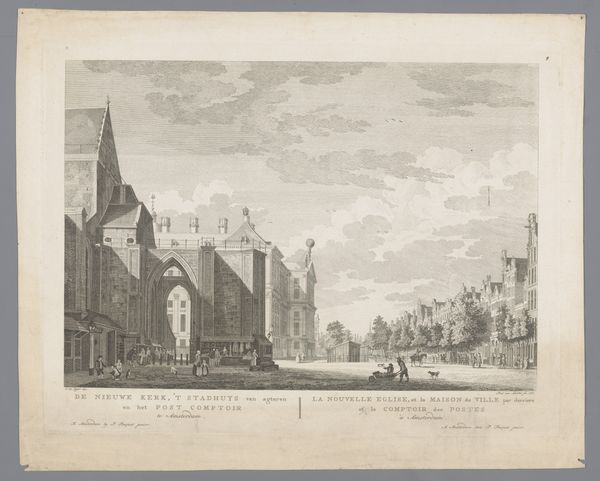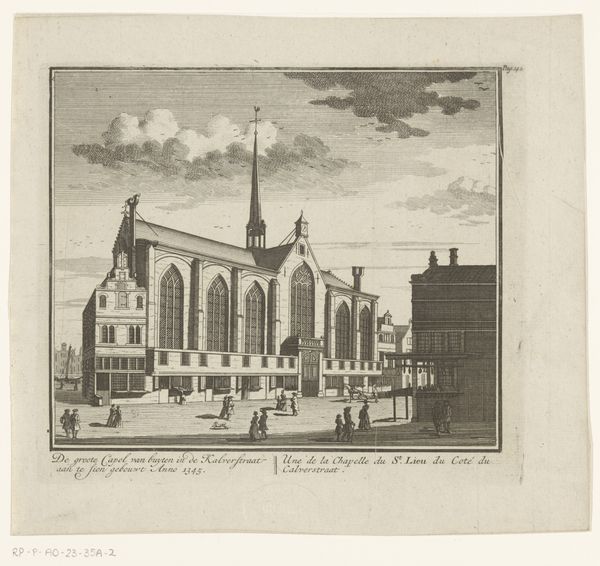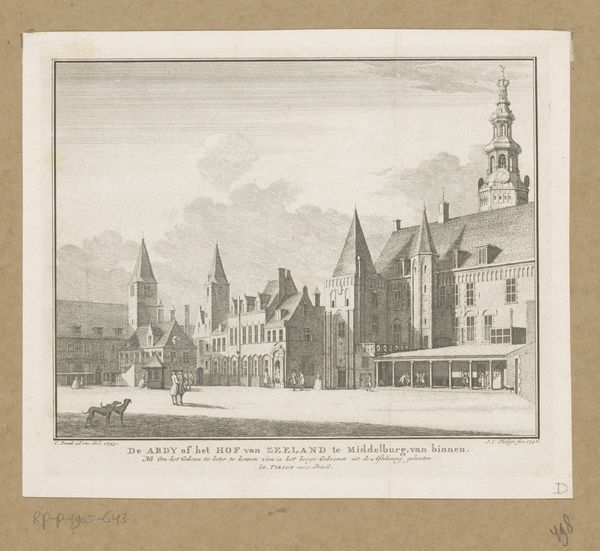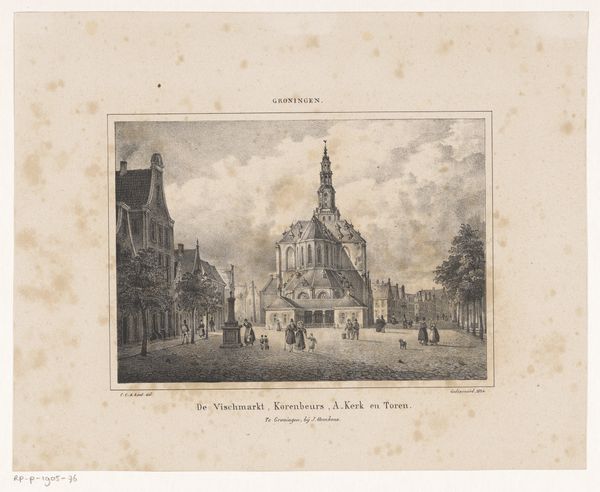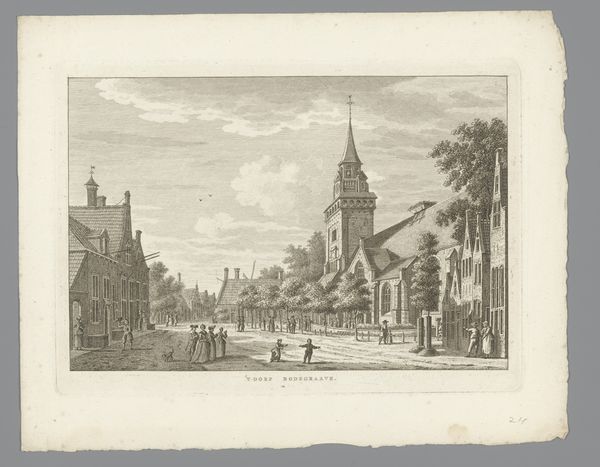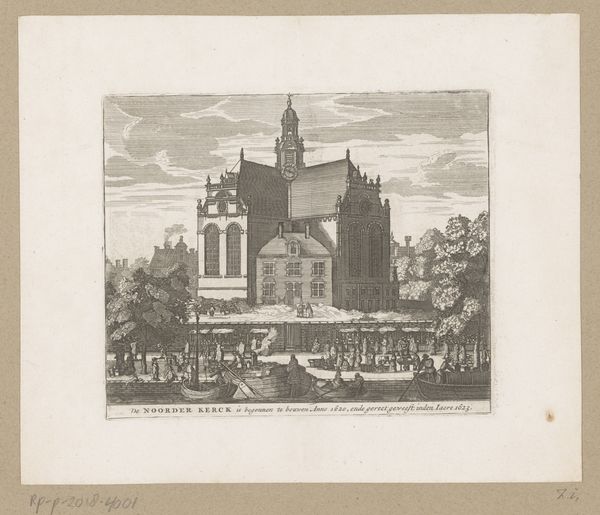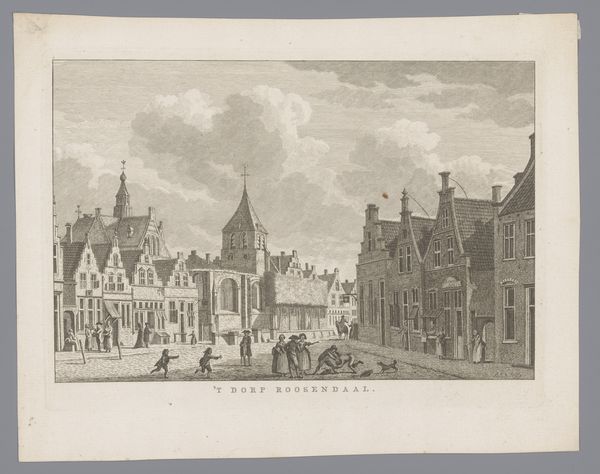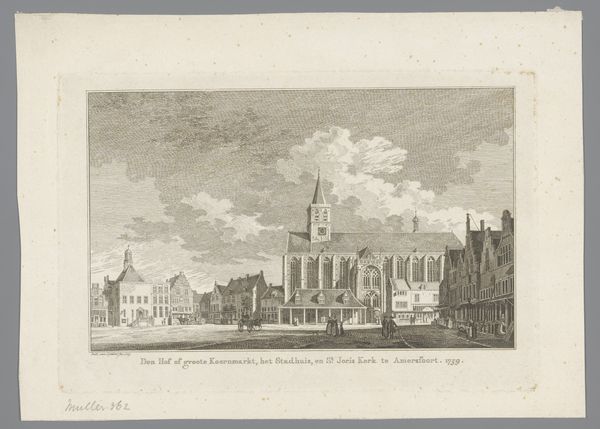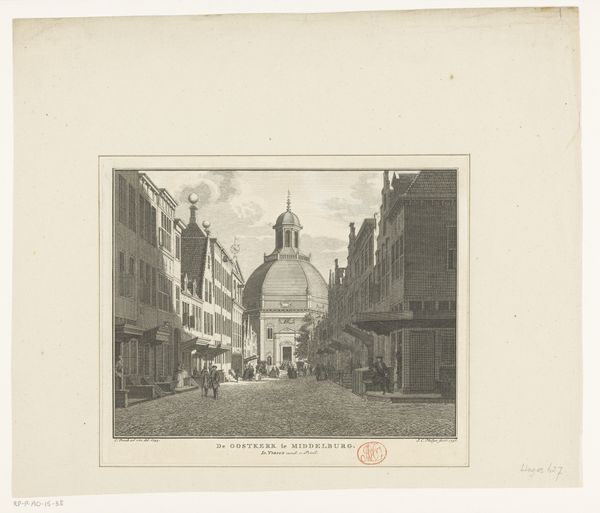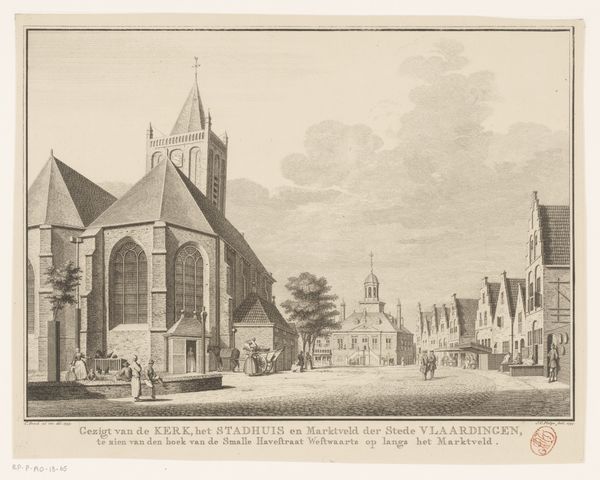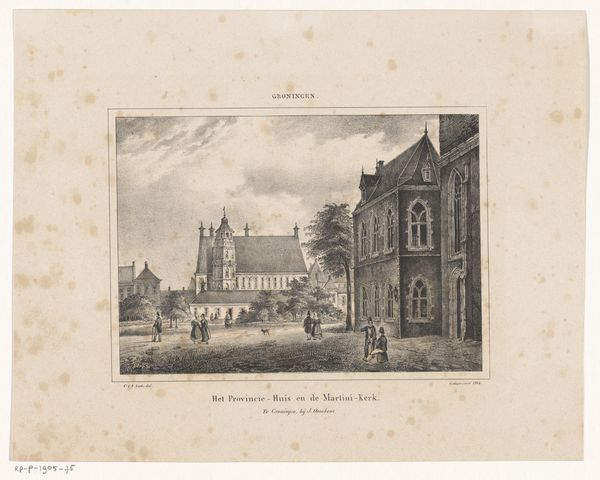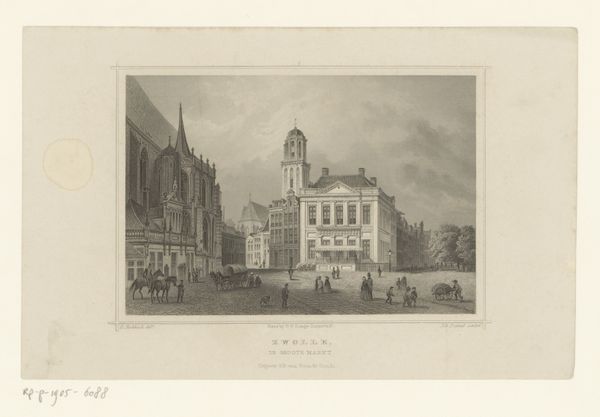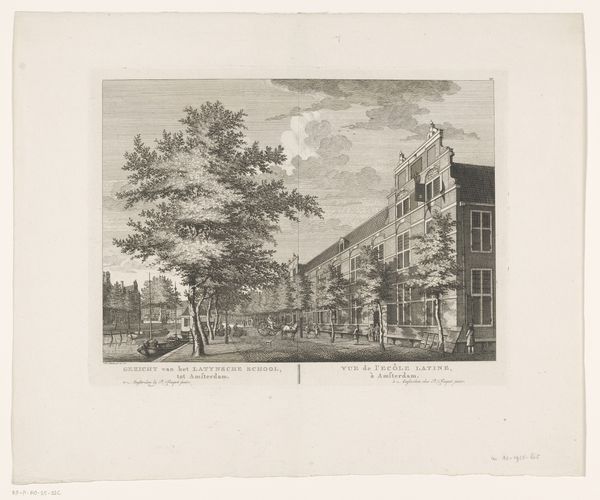
Gezicht op de Sint-Olofskapel (Oudezijds Kapel) te Amsterdam c. 1770 - 1783
0:00
0:00
Dimensions: height 264 mm, width 356 mm
Copyright: Rijks Museum: Open Domain
Editor: This etching by Hermanus Petrus Schouten, titled "View of the Sint-Olofskapel (Oudezijds Kapel) in Amsterdam" dates back to around 1770-1783. It’s a lovely cityscape. I'm immediately drawn to how detailed the rendering of the buildings is, capturing a very specific time. What stands out to you? Curator: For me, it’s the materiality of the print itself. Etching, as a process, involves labor – the physical act of incising the plate, applying the acid, the repetitive action of printing. It reflects a kind of democratized image production accessible to a growing urban middle class. The ink itself, the paper... these were commodities, reflecting Amsterdam’s mercantile power. Editor: So, you’re less focused on the building depicted and more on the… print itself as an object? Curator: Precisely! The image, of course, speaks to Amsterdam's built environment, its infrastructure. But I see those structures – that chapel, the adjacent buildings, the suggestion of bustling streets – as evidence of economic systems, flows of capital and resources, all culminating in the creation and consumption of images like this one. The composition isn't just aesthetic, it's a visual record of material conditions. Who was commissioning this print, and why? Editor: Interesting! It makes me consider the market for these city views and how the accessibility of prints broadened the appeal of art beyond wealthy patrons. Curator: Exactly! This wasn't just art for art's sake, it was part of a broader system of production, distribution, and consumption. We are invited to analyze the relationship of that church, as material evidence and symbolic authority, and its inhabitants during this period. Editor: That perspective shifts my understanding completely. Thanks, that really gave me something to think about! Curator: Likewise. I find considering the relationship between materiality and representation truly rewarding.
Comments
No comments
Be the first to comment and join the conversation on the ultimate creative platform.

